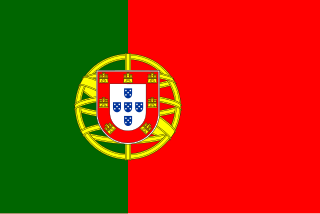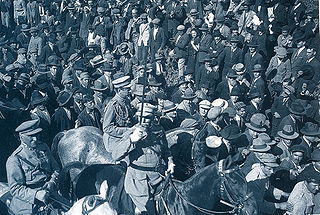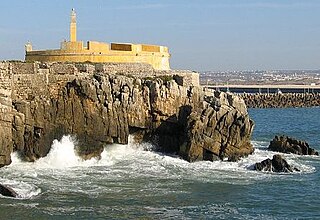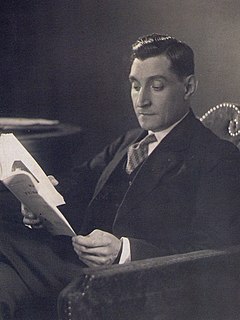 W
WThe Estado Novo was the corporatist regime installed in Portugal in 1933. It evolved from the Ditadura Nacional formed after the coup d'état of 28 May 1926 against the democratic and unstable First Republic. Together, the Ditadura Nacional and the Estado Novo are recognised by historians as the Second Portuguese Republic. The Estado Novo, greatly inspired by conservative and autocratic ideologies, was developed by António de Oliveira Salazar, who was President of the Council of Ministers from 1932 until illness forced him out of office in 1968.
 W
WThe Ditadura Nacional was the name given to the regime that governed Portugal from 1926, after the re-election of General Óscar Carmona to the post of President, until 1933. The preceding period of military dictatorship that started after the 28 May 1926 coup d'état is known as Ditadura Militar. After adopting a new constitution in 1933, the regime changed its name to Estado Novo. The Ditadura Nacional, together with the Estado Novo, forms the historical period of the Portuguese Second Republic (1926–1974).
 W
WThe 1936 Naval Revolt or Tagus boats mutiny was a mutiny in Portugal that occurred on 8 September 1936 aboard the aviso Afonso de Albuquerque and destroyer Dão. It was organized by the Revolutionary Organization of the Fleet, a left-wing group with links to the Portuguese Communist Party.
 W
WThe 1967 Portugal floods were flash floods that took place in 25 and 26 November 1967, Portugal, in the Lisbon metropolitan area, affecting a total of 14 municipalities. It was the most deadly flood registered in Portugal, accounting for more than half of all registered deaths by floods since 1865. It was also the deadliest natural hazard in Portugal since the 1755 Lisbon earthquake.
 W
WMarcello José das Neves Alves Caetano was a Portuguese politician and scholar. He was the second and last leader of the Estado Novo after succeeding Antonio Salazar. He served as prime minister from 1968 to 1974, when he was overthrown during the Carnation Revolution.
 W
WThe 28 May 1926 coup d'état, sometimes called 28 May Revolution or, during the period of the authoritarian Estado Novo, the National Revolution, was a military coup of a nationalist origin, that put an end to the unstable Portuguese First Republic and initiated 48 years of authoritarian rule in Portugal. The regime that immediately resulted from the coup, the Ditadura Nacional, would be later refashioned into the Estado Novo, which in turn would last until the Carnation Revolution in 1974.
 W
WAntónio Joaquim Tavares Ferro was a Portuguese writer, journalist and politician, associated with the Estado Novo.
 W
WThe General Directorate of Security or DGS was a Portuguese criminal police body between 1969 and 1974.
 W
WThe Estado Novo was the corporatist regime installed in Portugal in 1933. It evolved from the Ditadura Nacional formed after the coup d'état of 28 May 1926 against the democratic and unstable First Republic. Together, the Ditadura Nacional and the Estado Novo are recognised by historians as the Second Portuguese Republic. The Estado Novo, greatly inspired by conservative and autocratic ideologies, was developed by António de Oliveira Salazar, who was President of the Council of Ministers from 1932 until illness forced him out of office in 1968.
 W
WThe National Union was the sole legal party of the Estado Novo regime in Portugal, founded in July 1930 and dominated by António de Oliveira Salazar during most of its existence.
 W
WThe Peniche Fortress is located in the municipality of Peniche in Leiria District, Portugal. Built on the site of the former Castle of Atouguia da Baleia, of which only a few vestiges remain, initial construction took place in 1557 and 1558 but there have been numerous subsequent modifications. Its defensive walls surround an area of two hectares, divided into upper and lower parts. The fortress has served a number of functions including that of a political prison during the authoritarian Estado Novo regime.
 W
WThe PIDE or International and State Defense Police was a Portuguese security agency that existed during the Estado Novo regime of António de Oliveira Salazar. Formally, the main roles of the PIDE were the border, immigration and emigration control and internal and external State security. Over time, it came to be known for its secret police activities.
 W
WPluricontinentalism was a geopolitical concept, positing that Portugal was a transcontinental country and a unitary nation-state consisting of continental Portugal and its overseas provinces.
 W
WThe Rhodesian mission in Lisbon, the capital of Portugal, operated from September 1965 to May 1975. It was a diplomatic mission representing Rhodesia, initially as a self-governing colony of Britain and, after the Unilateral Declaration of Independence in November 1965, as an unrecognised state. Rhodesia informed Britain of its intent to open a Lisbon mission headed by an accredited representative, independent from the British Embassy in the city, in June 1965. Whitehall refused to endorse the idea but Rhodesia continued nonetheless, and later that month appointed Harry Reedman to head the mission. The British government attempted unsuccessfully to block this unilateral act—Rhodesia's first—for some months afterwards.
 W
WAntónio de Oliveira Salazar was a Portuguese economist who served as the prime minister of Portugal from 1932 to 1968. He was responsible for the Estado Novo, the corporatist authoritarian government that ruled Portugal until 1974.
 W
WThe Santa Maria hijacking was carried out on 22 January 1961 when Portuguese and Spanish political rebels seized control of a Portuguese passenger ship, aiming to force political change in Portugal. The action was also known as Operation Dulcinea, the code name given by its chief architect and leader, Portuguese military officer, writer and politician Henrique Galvão, who had been exiled in Caracas, Venezuela since 1959. After United States naval intervention, the ship arrived in Brazil, and the hijacking ended on 2 February when the rebels were given political asylum there.
 W
WThe Estado Novo was the corporatist regime installed in Portugal in 1933. It evolved from the Ditadura Nacional formed after the coup d'état of 28 May 1926 against the democratic and unstable First Republic. Together, the Ditadura Nacional and the Estado Novo are recognised by historians as the Second Portuguese Republic. The Estado Novo, greatly inspired by conservative and autocratic ideologies, was developed by António de Oliveira Salazar, who was President of the Council of Ministers from 1932 until illness forced him out of office in 1968.
 W
WThe State Surveillance and Defense Police (PVDE) was a police force of the Portuguese State, which operated between 1933 and 1945. The PVDE was responsible for border surveillance, control of foreigners, immigration control, and state security.
 W
WTarrafal was a concentration camp located in the village of Chão Bom, in the Municipality of Tarrafal, on the island of Santiago in Cape Verde.